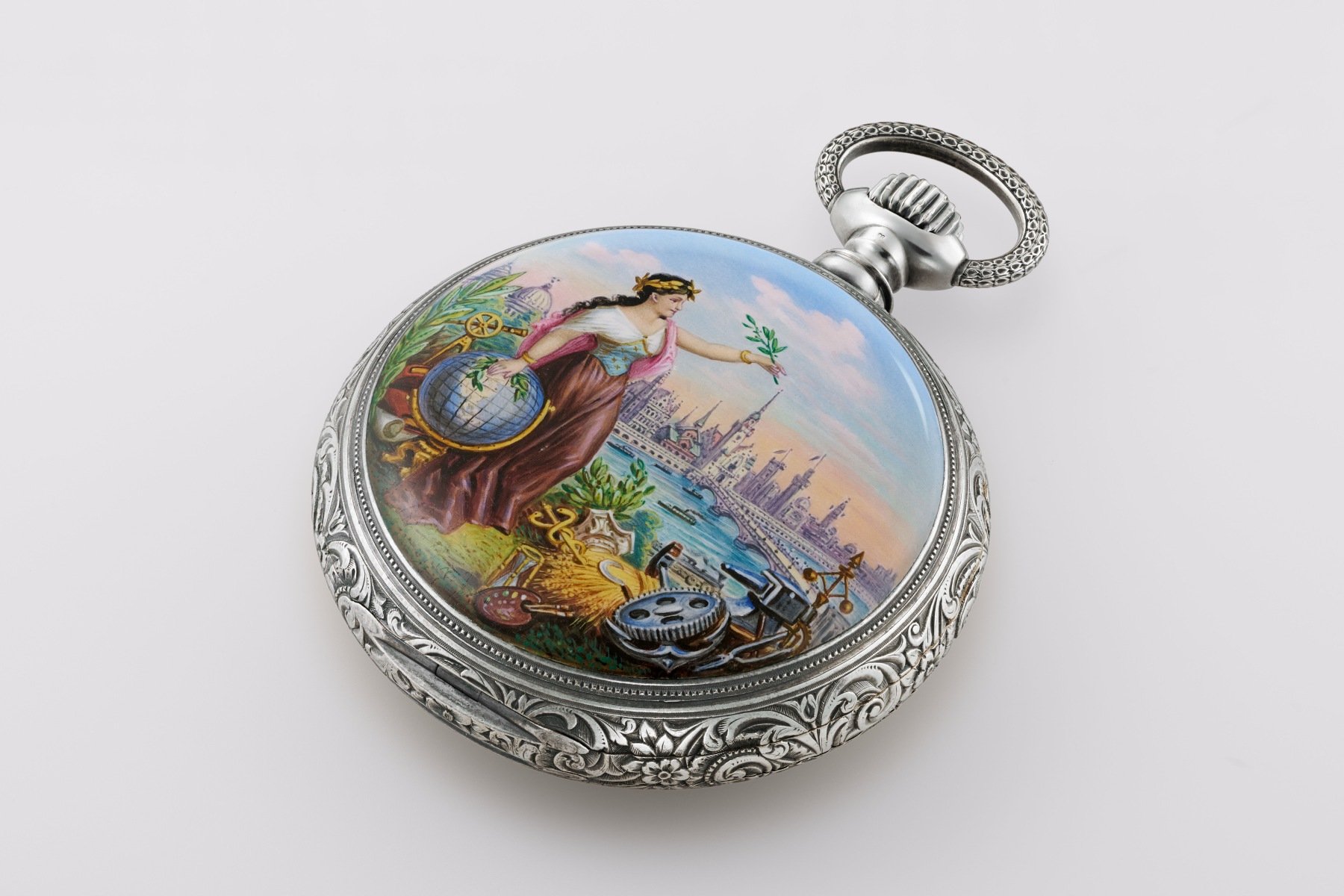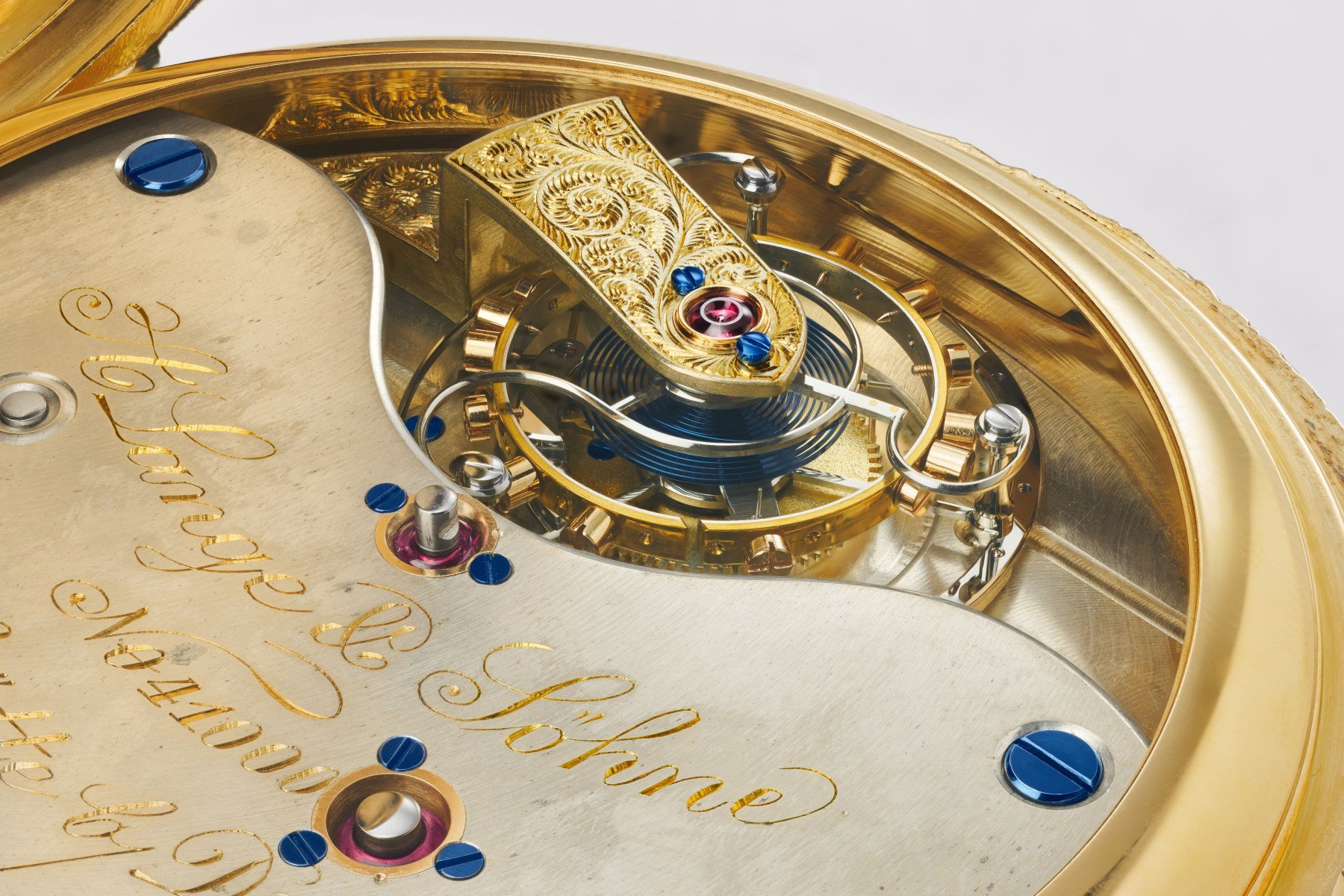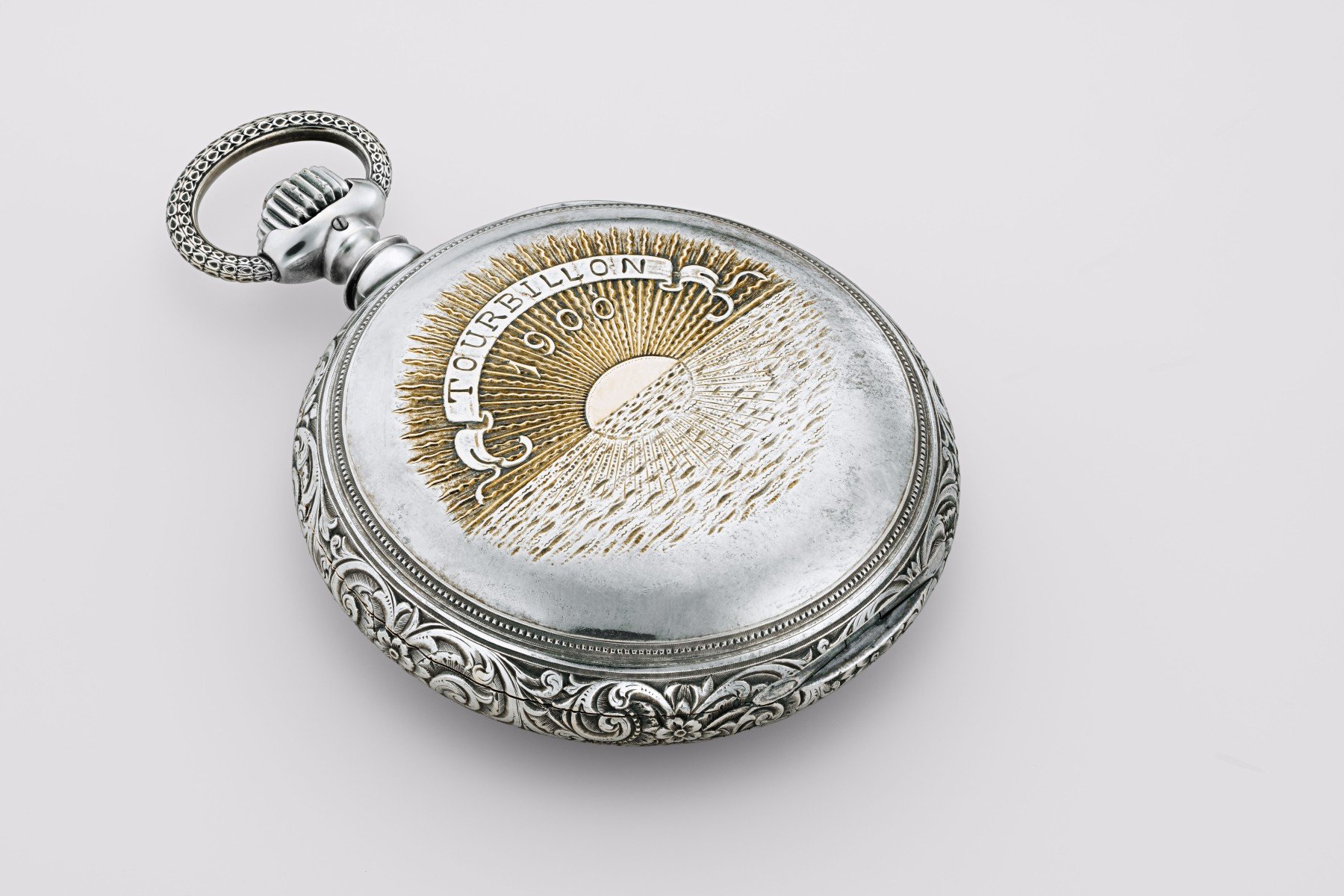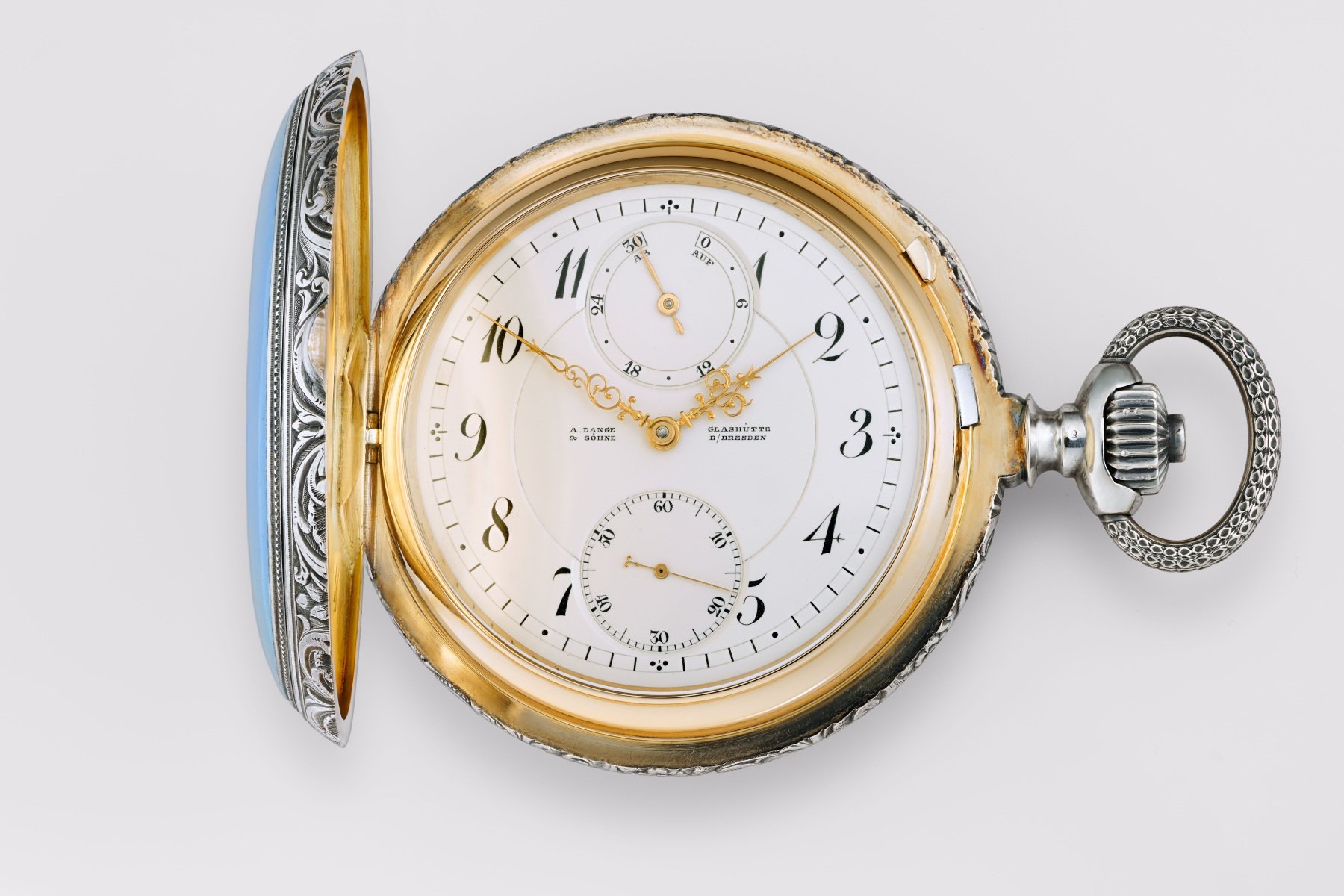The A. Lange & Söhne Centennial Tourbillon Comes Home
The 1900 Paris World Exhibition was quite the event. The Grand Palais and Petit Palais were built for the occasion, and visitors could marvel at technological marvels, like the first escalators, the Rue de l’Avenir moving sidewalk, the city’s first metro line, as well as recreations of old Paris and a Swiss village, along with exhibits on electricity and the first-ever movie theaters. The fair also hosted the first Olympics outside of Greece and showcased a diverse range of art and cultural displays. Among the fascinating exhibits was the A. Lange & Söhne Centennial Tourbillon, a pocket watch featuring a complicated movement and an enameled depiction of the goddess Minerva. The watch bearing No. 41000 is one of the most renowned and valuable pocket watches from the brand, and it has now returned home to the Museum Bautzen after being lost amid the turmoil at the end of World War II.
Before diving into the history of the A. Lange & Söhne Centennial Tourbillon, it’s worth noting that this pocket watch served as a source of inspiration for Walter Lange and Günter Blümlein to develop the Tourbillon “Pour le Mérite” after Lange’s re-establishment in 1990. Martin Huber featured the watch in his authoritative reference work Die Lange Liste (The Lange List), which catalogs all of the brand’s complicated pocket watches from 1866 onward. The Centennial Tourbillon No. 41000 was along just 11 other tourbillons documented between 1892 and 1925. However, delivery records exist for only nine of them. Among these, No. 41000 stands out as an exceptionally magnificent piece and a technical marvel. Its caliber features a one-minute tourbillon with a fusée-and-chain transmission, complemented by the Up/Down power-reserve indicator characteristic of A. Lange & Söhne timepieces. Now you understand the significance of this pocket watch.
The A. Lange & Söhne Centennial Tourbillon: Watch at an exhibition
Back to the long-lost pocket watch No. 41000. In 1900, Lange initially delivered it to the Saxon court jeweler Paul Thimig in Dresden, who sold it to Otto Weigang, the owner of a printing house in Bautzen, for 1,500 gold marks. Weigang, an entrepreneur with a notable collection of important pocket watches, also maintained business ties with the A. Lange & Söhne manufactory. His chromolithographic art institute produced high-quality advertising materials for many Saxon manufacturers of the era. By the way, chromolithography is a technique for creating multicolored prints by using multiple flat stones, each inked with a different color and printed in sequence to form the complete image.
Before the watch reached its buyer, Emil Lange — the second-generation sole owner of the company since 1887 — took it to the French capital as a showcase piece while serving on the international jury at the 1900 Paris World Exhibition.
A more detailed look at the Centennial Tourbillon
This watch is one of the few tourbillons ever produced by the historic Glashütte manufactory. It features an intricately crafted, platinum-plated gold hunter case adorned with Neo-Renaissance-style engravings. On the front, a polychrome enamel miniature depicts an allegory of Minerva, the Roman goddess of wisdom, standing beside a globe. As the patroness of merchants, craftsmen, and artists, she holds an olive branch in her left hand, symbolizing peace, and a laurel wreath in her right, symbolizing victory. Together, these elements express confidence in the triumph of peace through economic and scientific progress.
The case back shows a rising sun over the sea, emblematic of the dawn of a new era — the eagerly anticipated 20th century. Because Emil Lange served as a jury member, he could present the watch only outside of the official competition, where it attracted considerable attention from experts.
Furthermore, in recognition of his service as a juror and his remarkable horological achievement, Emil Lange was appointed a Knight of the French Legion of Honor in 1902.
The Centennial Tourbillon disappears and reappears
After Emil Lange returned from Paris, the Centennial Tourbillon finally reached its first owner, Otto Weigang. When Weigang died in 1914, the watch, along with other pocket watches and artworks from his extensive collection, was transferred to the Museum Bautzen. During the chaotic aftermath of World War II, the valuable timepiece vanished from an external storage site in 1945. The site held parts of the museum’s holdings for protection from air raids. For decades, it remained missing — until it resurfaced in 1976 at Martin Huber’s renowned special exhibition showcasing exceptional Lange pocket watches.
“I am very grateful to Martin Huber for organizing this exhibition. He played a major role in restoring the Lange name to the awareness of all those who never lost their belief in and fascination for these extraordinary mechanical watches,” Walter Lange reflected after the company’s revival in 1990.
“1.000 Schritte durch 1.000 Jahre – Stadt Bautzen”*
Since its rediscovery, pocket watch No. 41000 has gone up for auction multiple times. The most recent auction, scheduled at Sotheby’s in London in spring 2019, ultimately did not proceed. Instead, the town of Bautzen contacted the auction house and chose to repurchase the watch. Clearly, the town understood and recognized this timepiece’s exceptional cultural and historical importance. “One hundred years after it was first donated, the watch is now returning to Bautzen,” declared then-Lord Mayor Alexander Ahrens at the ceremony in June 2022. “This is a piece of Saxony’s industrial history, a piece of Bautzen’s history.”
Since 2025 marks the 125th anniversary of the 1900 Paris World Exhibition, and it’s always a good idea to take a look at exceptional timepieces, you might as well plan a trip to the Museum Bautzen. If you want to take a watchmaking road trip, enter this address into your navigation system/app: Kornmarkt 1, 02625 Bautzen, Germany. Bautzen is approximately 65 kilometers east of the beautiful city of Dresden. And the distance from Bautzen to the watchmaking town of Glashütte is around 100 kilometers. So, have a good trip!
*”1,000 steps through 1,000 years – Bautzen City” is Bautzen’s official tourist slogan.













